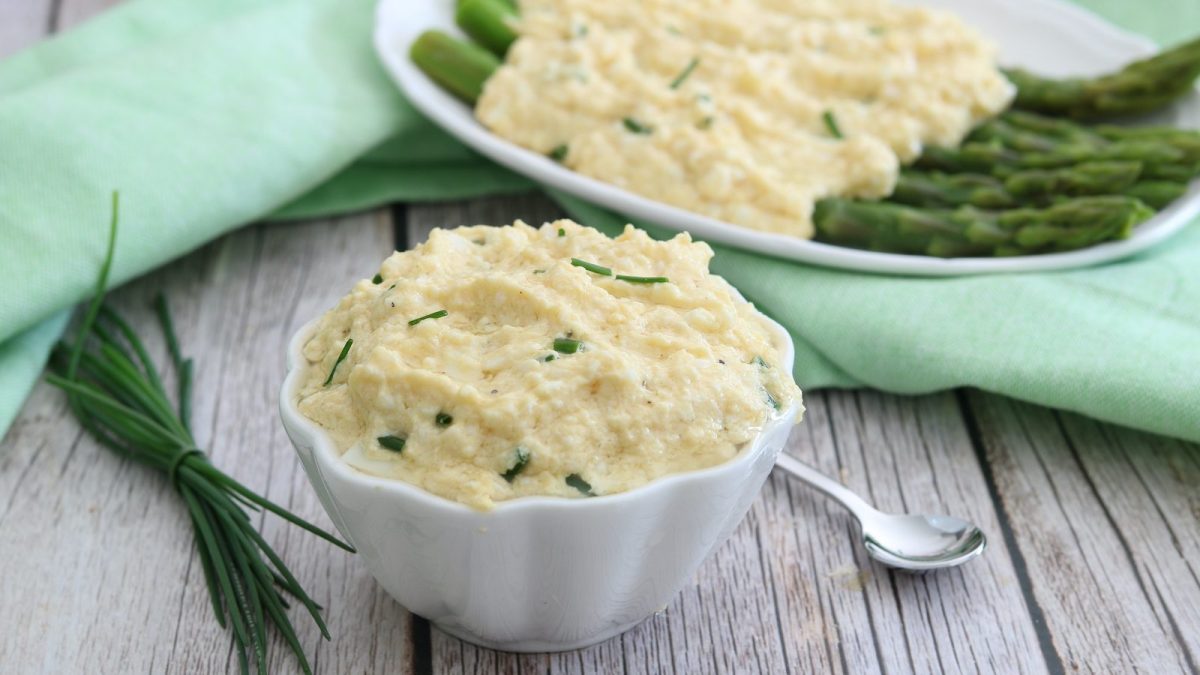
South Tyrolean Bozner Sauce, also known as Bolzanina, is a typical recipe from Trentino-Alto Adige. It is a savory preparation made with hard-boiled eggs, mustard and seed oil, flavored with white wine vinegar and fresh chives.
Making Bolzanina sauce is very easy and quick: after boiling the eggs, sift the yolks while the egg whites are finely chopped with a knife and then put in a bowl and mixed with sunflower seed oil, mustard, white vinegar and flavored with chives.
The consistency of the Bolzano sauce must be creamy, but not velvety, since it is not blended: the ingredients are in fact mixed with a whisk, so the little pieces of egg whites and sifted yolks are visible and easily perceptible to the palate.
What is Bozner Sauce?
Bozner sauce, or Salsa Bolzanina, hails from South Tyrol (Alto Adige), a culturally rich region in northern Italy with deep Austrian and Germanic influences. The sauce likely originated as a springtime accompaniment to hard-boiled eggs, traditionally served during Easter. Its name comes from Bolzano (Bozen in German), the capital of South Tyrol, reflecting its local roots and linguistic duality.
Historically, Bozner sauce embodies the region’s fusion cuisine, blending Italian ingredients like olive oil and vinegar with the Austro-German love for mustard and egg-based condiments. Its creamy, tangy profile made it a staple not only for eggs but also for asparagus, cold meats, and hearty breads—common in Tyrolean meals.
Pro Tips for The Best Bozner Sauce
- Since hard-boiled egg yolks are a key ingredient, freshness matters. Fully cook the eggs but avoid overcooking to keep the yolks creamy and vibrant.
- Add oil slowly while whisking to ensure the sauce emulsifies properly and achieves a smooth, velvety consistency.
- Use a mild or medium-strength mustard—preferably a smooth German or Dijon style—to maintain balance without overpowering the delicate egg flavor.
- White wine vinegar is traditional, but adjust the quantity to your taste. Too much vinegar can dominate, while too little may make the sauce taste flat.
- A pinch of salt and white pepper is usually enough. Let the mustard and vinegar provide most of the seasoning.
- The sauce should not be too cold; letting it rest at room temperature before serving enhances flavor and texture.
Can I Make Bozner Sauce Without Eggs
Traditionally, Bozner sauce requires eggs, but for an egg-free version, you can substitute with silken tofu or vegan mayo to mimic the creamy texture—though the flavor will differ.
What Can I Serve Bozner Sauce With?
It is traditionally used to season white asparagus from Terlano, but it is also excellent with green asparagus, which is more easily available, to fill savory cream puffs, to flavor meat or fish main courses or simply to spread on croutons.
Can I Make It Ahead of Time?
Yes, you can make Bozner sauce ahead of time—store it in the fridge for up to 2 days, but let it come to room temperature before serving for the best flavor.
Does It Freeze Well?
No, Bozner sauce does not freeze well—freezing can cause the emulsion to break and the texture to become grainy and unappetizing.
How to Store Any Leftovers
Store leftover Bozner sauce in an airtight container in the refrigerator for up to 2 days. Stir gently before serving to restore its smooth consistency.
Ingredients
How to Make Bozner Sauce
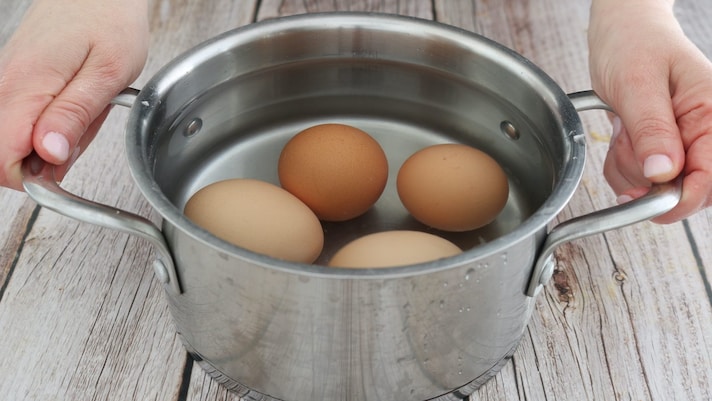
Place the eggs in a pan with cold water, bring to the boil and cook for about 7 minutes. Once boiled, immerse the eggs in cold water.
Place the eggs in a pan with cold water, bring to the boil and cook for about 7 minutes. Once boiled, immerse the eggs in cold water.
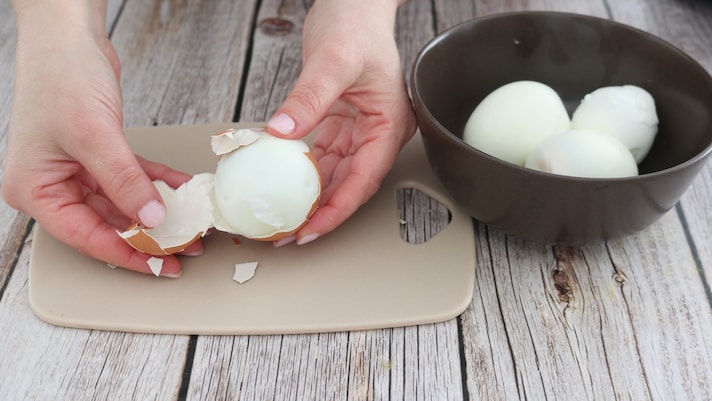
Shell the hard boiled eggs.
Shell the hard boiled eggs.
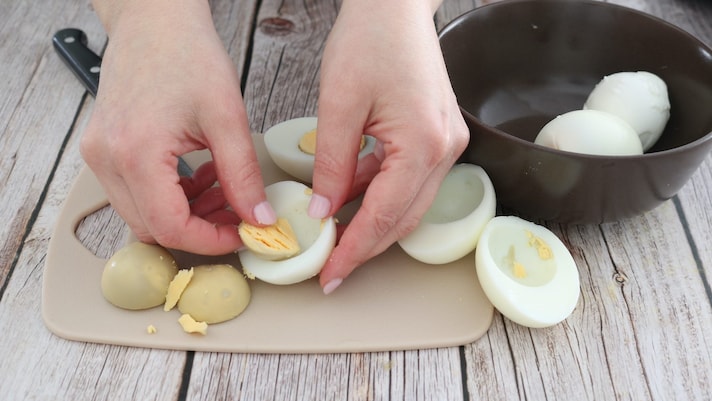
Cut the eggs in half, remove the yolks and set them aside.
Cut the eggs in half, remove the yolks and set them aside.
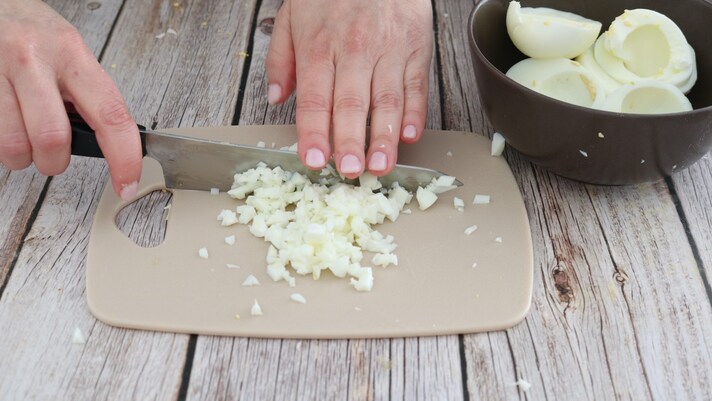
Using a sharp, smooth-bladed knife, cut the egg whites very finely.
Using a sharp, smooth-bladed knife, cut the egg whites very finely.
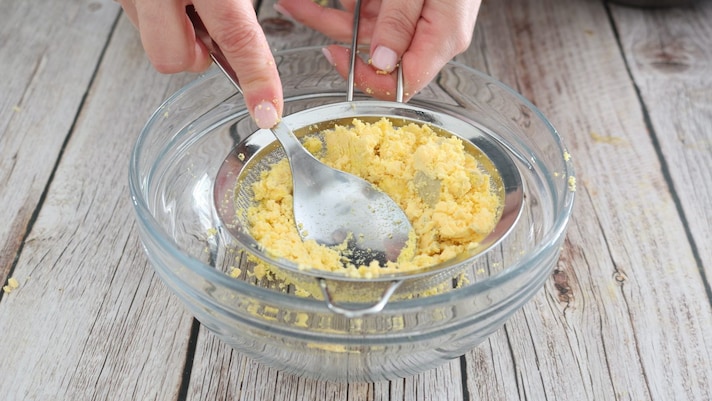
Sift the egg yolks.
Sift the egg yolks.
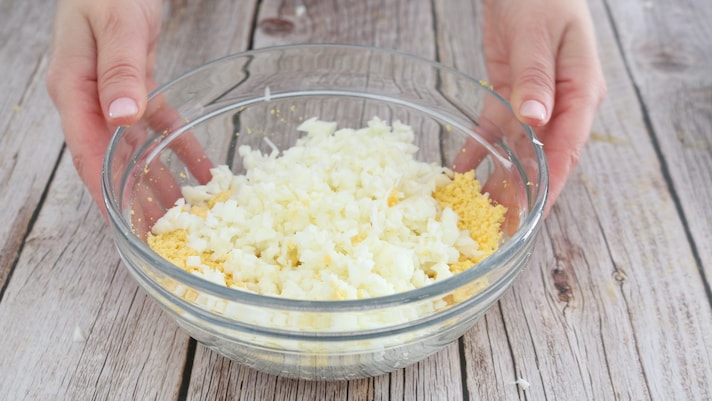
Combine the chopped egg whites with the sifted egg yolks.
Combine the chopped egg whites with the sifted egg yolks.
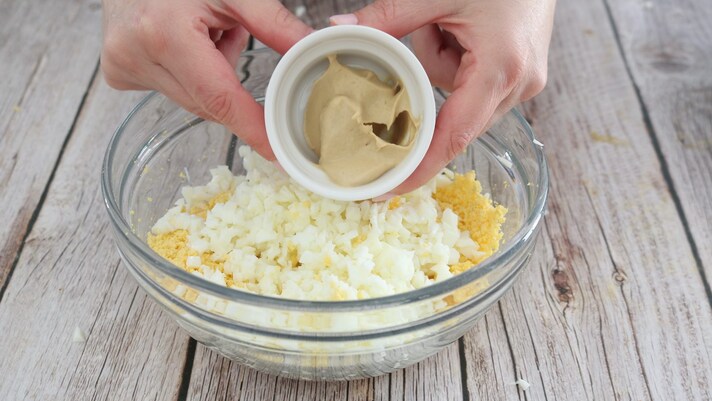
Add the mustard.
Add the mustard.
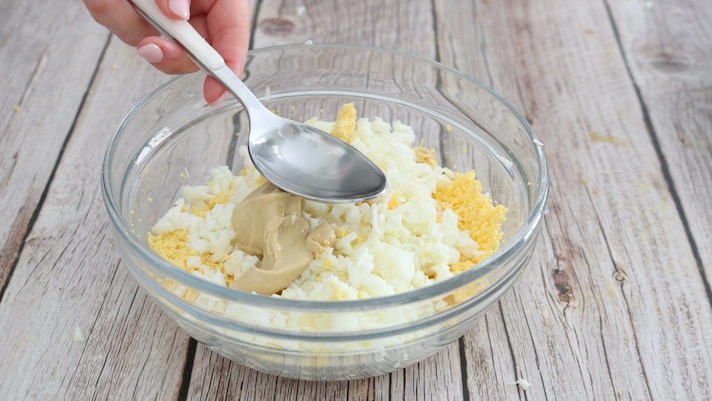
Pour the white vinegar.
Pour the white vinegar.
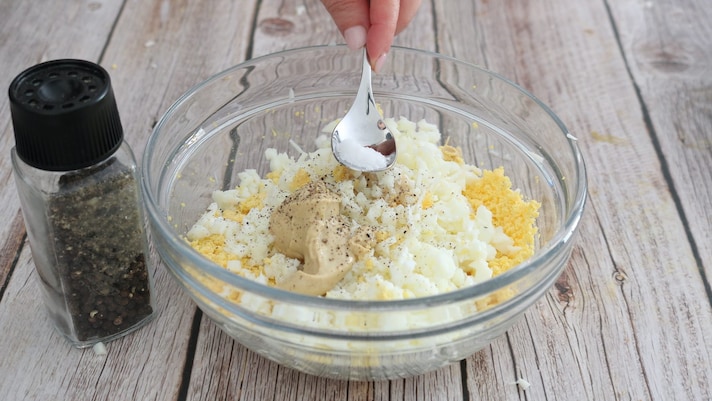
Season with salt and freshly ground pepper.
Season with salt and freshly ground pepper.
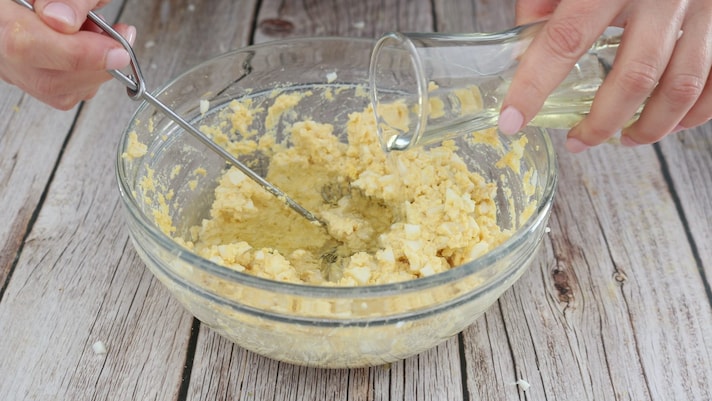
Mix with a whisk, pouring in the sunflower seed oil in a thin stream.
Mix with a whisk, pouring in the sunflower seed oil in a thin stream.
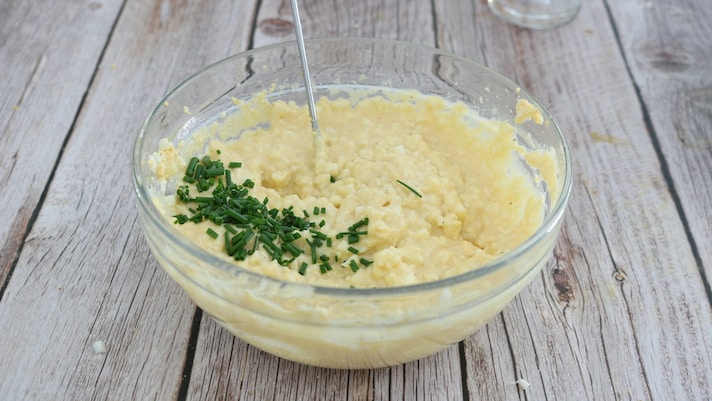
Flavor with finely chopped chives.
Flavor with finely chopped chives.
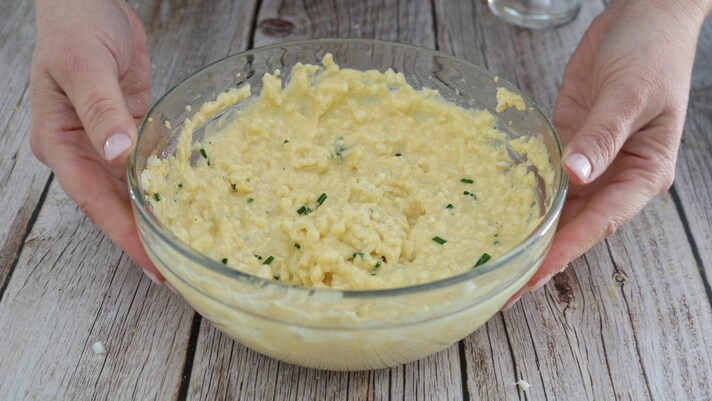
Mix the Bozner sauce until you get a well-blended cream.
Mix the Bozner sauce until you get a well-blended cream.
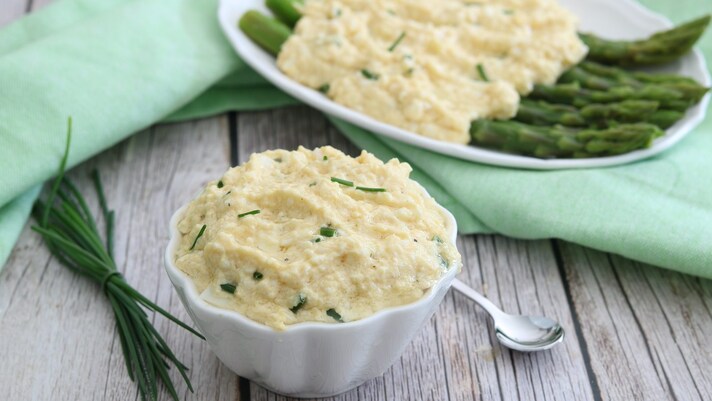
Transfer the Bolzano sauce to a serving bowl and distribute part of it over the boiled asparagus. Serve at the table.
Transfer the Bolzano sauce to a serving bowl and distribute part of it over the boiled asparagus. Serve at the table.
;Resize,width=767;)
